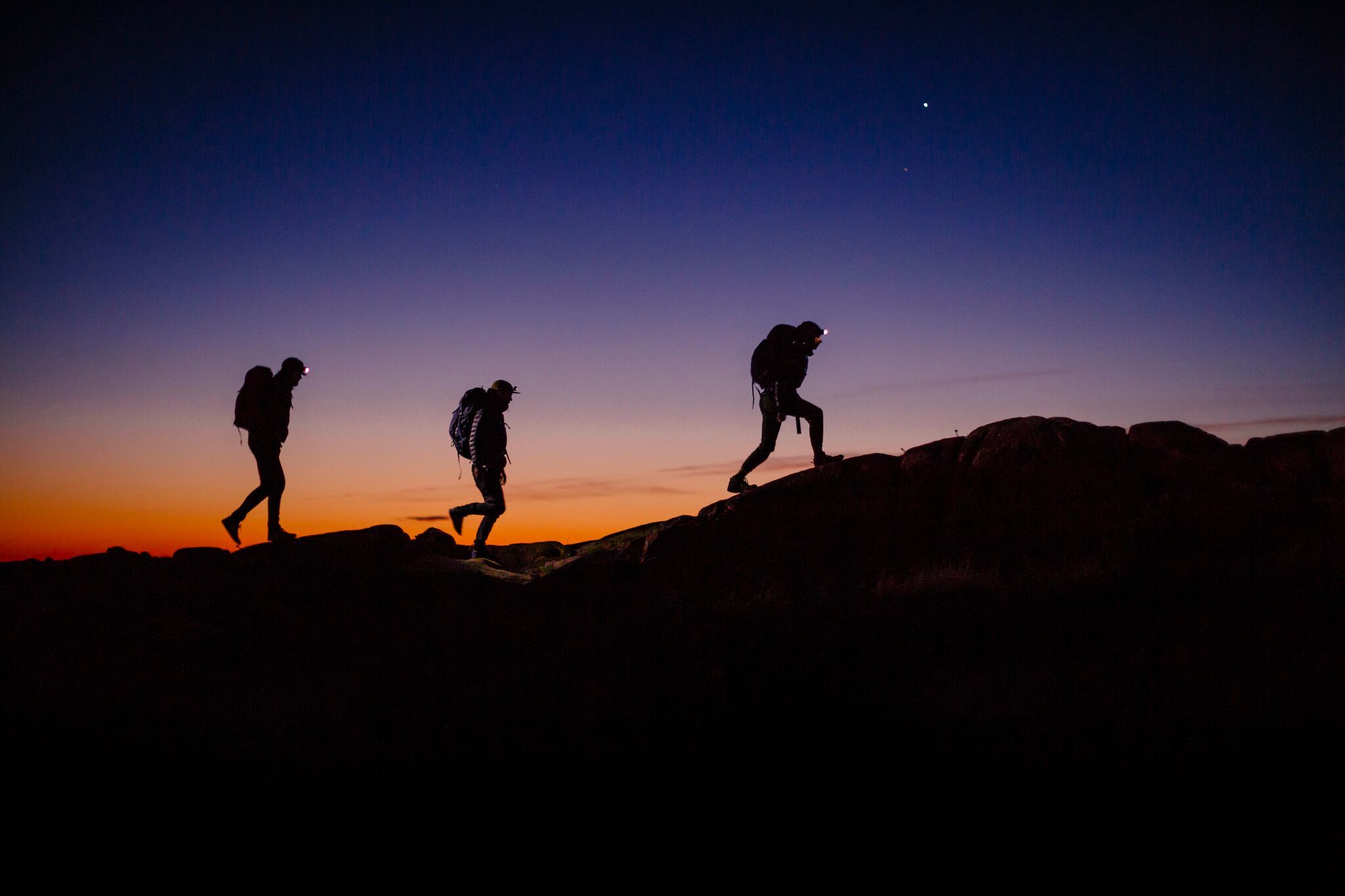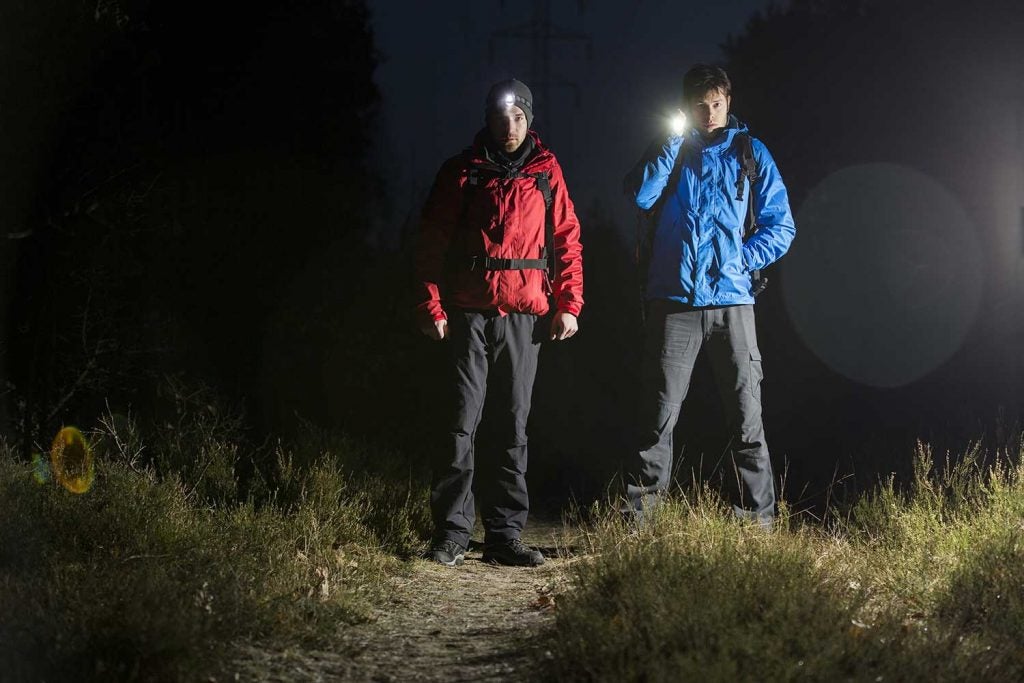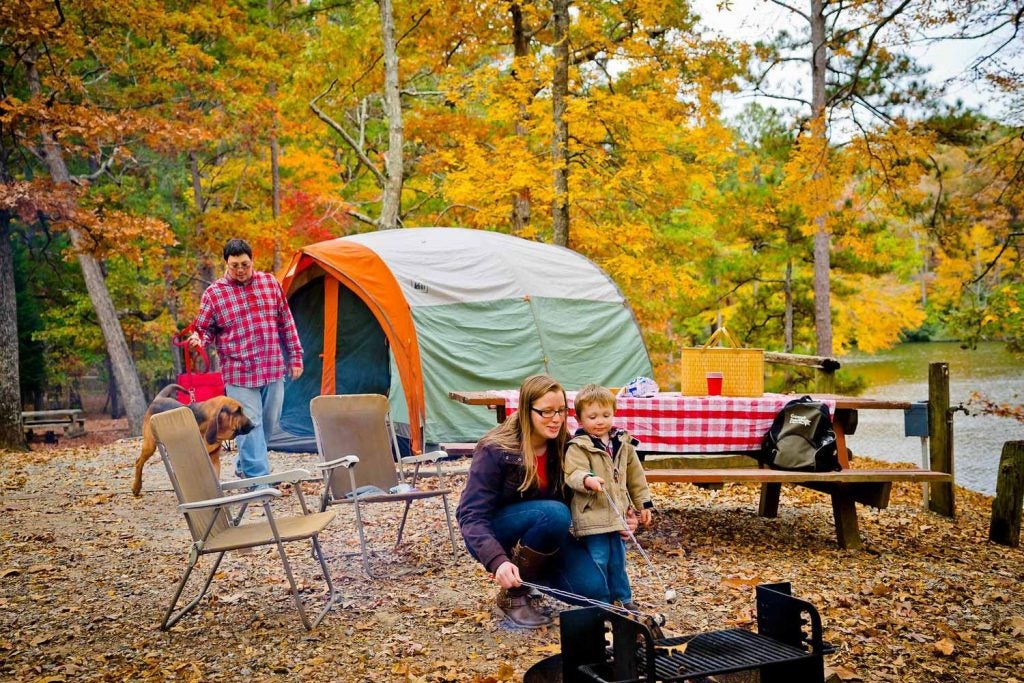This night hiking article is brought to you by our friends at Gregory Packs. Their lightweight backpacks aren’t just for when the sun is high in the sky — they’re perfect for night hiking too.
I live and breath for hiking. But living in the Pacific Northwest means short daylight hours during the fall and winter months. This makes it challenging to get a hike in after work, unless I’m willing to face the dark.
The woods after dark can be a little spooky. But I had to make a choice — either not hike or find the courage to get out there in the early mornings or dark evenings after work. So what did I do? Well, I grabbed a couple headlamps, my trusty hiking day pack, some extra layers, a thermos full of hot apple cider, and headed to the trailhead.
Explore Trails After Dark with These Night Hiking Tips
Hiking after dusk offers many perks. After all my night hikes, I’ve grown to love the quiet, empty trails. Nights are colder, which I prefer to hot afternoons—and that brisk air keeps my senses sharp. I’ve discovered entirely new experiences on very familiar trails. From the beautiful twinkling night sky to the looming shadows of the landscapes; hiking after sunset or before sunrise is an enchanting experience.
If you’re interested in experiencing night hikes for yourself, here are some tips for getting started:
Smart Packing Tips for Your Next Night Hike
View this post on Instagram
First things first, you’ll need a headlamp or a flashlight. Better yet, bring both with extra batteries. Check your headlamps and flashlights before every trip.
Also, bring friends! Going in a group will help keep you safe and entertained with trail chatter. Bring snacks that you wouldn’t normally bring on a hike like a thermos of hot cider and sweet treats. After all, hiking in the dark is worth celebrating.
Don’t forget to pack water. It’s still necessary to hydrate even when you’re not working up a sweat under the beating sun.
Lug ‘Lots of Layers and Lighting
View this post on Instagram
As with any outdoor activity, it’s all about the layers and fabric. Avoid cotton and use wool base layers.
It’s tempting to bundle up before you’ve left the car and peel layers off once you get started. But then you’re potentially sweating by the time you decide to take off some clothes. Being wet in cold weather is a recipe for disaster.
Instead, start at the trailhead slightly cold, knowing you’ll warm up when your heart rate increases and your body gets warmer.
One of my go-to’s for hiking in colder weather is a combination of warm base layers and a rain shell that cuts the wind but doesn’t add additional insulation. I know that the body heat I generate from hiking is typically enough to keep me warm. If you run cooler, then make sure you have extra options.
Don’t forget your head, hands, and feet. Wool socks, gloves, and a stocking hat will help keep you toasty. You can easily carry your extra layers, hat, gloves, and extra headlamp in your pack.
Plan Your Route in Advance
View this post on Instagram
Choose a trail you know. This is not the time to try that new backcountry trail with technical terrain. Stay on the designated trail—this will keep you safer when hiking after nightfall.
By choosing a trail you’re familiar with, staying on the trail, and using proper gear you can greatly reduce your risk of falling—one of the biggest risks of hiking day or night. According to the National Park Service’s Public Risk Management Program from 2007 to 2013, falling was the 3rd most common cause of death in our National Parks.
Relax, Time is On Your Side!
View this post on Instagram
The final step is deciding the best time to head out on the trail. Fortunately, the best time is any time! I love hiking in the snow during a full moon. And if you’re prepared for dark, you don’t have to worry so much about the clock.
With a little preparation and planning, your nighttime trek will be an adventure and not a nightmare.
If you love night hiking as much as I do, then you should check out these dark sky parks for camping destinations with some out-of-this-world stargazing.
The Dyrt is the only camping app with all of the public and private campgrounds, RV parks, and free camping locations in the United States. Download now for iOS and Android.Popular Articles:
Articles on The Dyrt Magazine may contain links to affiliate websites. The Dyrt receives an affiliate commission for any purchases made by using such links at no additional cost to you the consumer.



